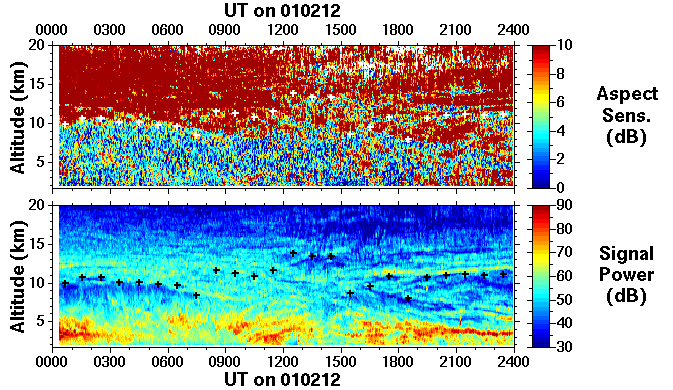
The term aspect sensitivity is typically used to describe the decrease of radar return signal power often seen (particularly at stratospheric altitudes) with increasing beam pointing zenith angle; there can also be a smaller variation of radar return signal power as a function of beam azimuth angle. In connection with the plots shown here the term is used to imply the ratio of radar return signal powers between the vertical and 6° off-vertical beam observations. It relates to the mechanism responsible for the radar returns which, in turn, relates to the horizontal homogeneity/inhomogeneity of the refractive index irregularities which, in turn, relates to whether or not the atmosphere has been recently mixed by turbulence. The aspect sensitivity is typically, but not always, high in the stratosphere and low in the troposphere. However, it is particularly interesting where it shows the opposite behaviour. Certainly some laminae of low aspect sensitivity in the lower stratosphere can be clearly associated with active turbulent mixing, though it remains to be established how long such a condition persists after the mixing has ceased. Moreover, at best the aspect sensitivity can be used to identify the presence of turbulence. In principle a quantitative measure can be derived from the spectral width, though in practice this also has its limitations.

 THE NERC MST RADAR FACILITY AT ABERYSTWYTH
THE NERC MST RADAR FACILITY AT ABERYSTWYTH